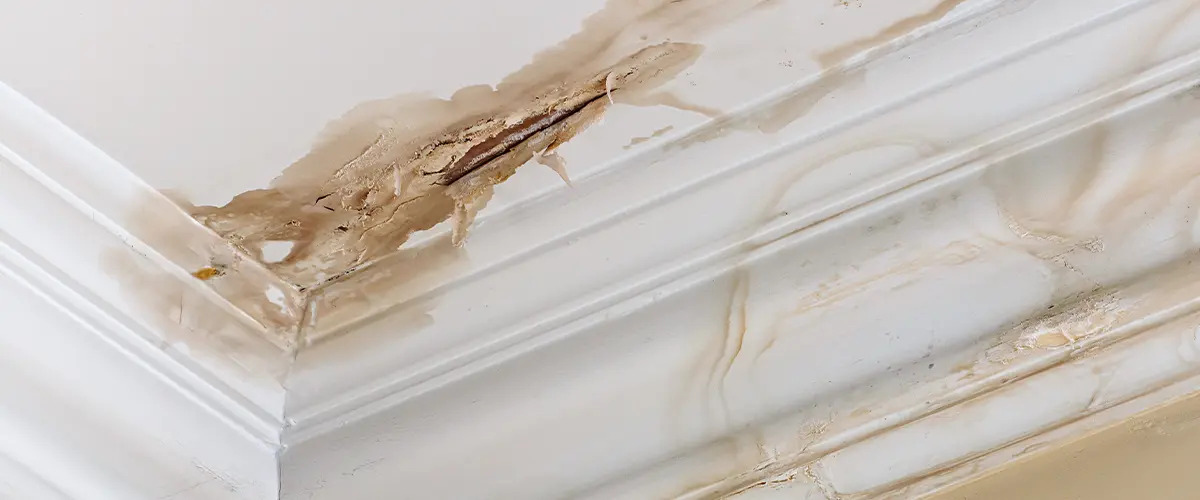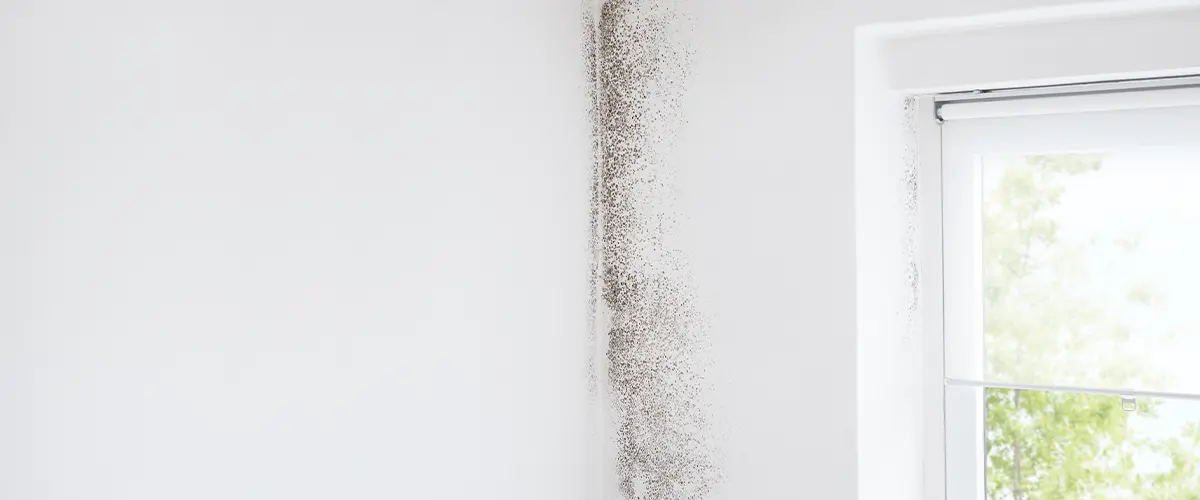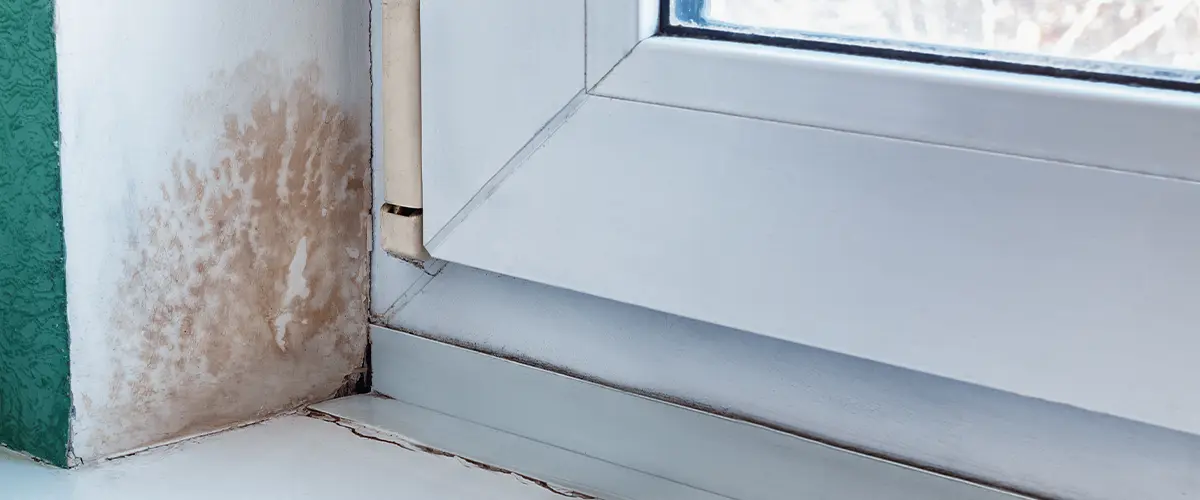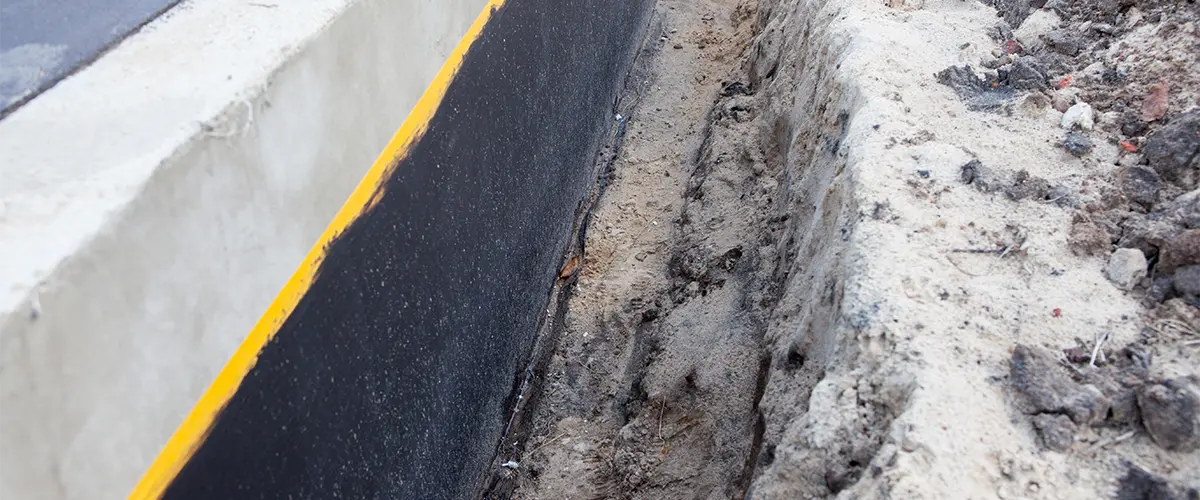Facing water damage in your home can be an overwhelming problem for homeowners in MD. In fact, it’s one of the leading causes of property devaluation and structural issues within households.
Rotting and premature failure, old or damaged shingles, mold growth, poor ventilation, and improper electrical wiring are all problems that need to be addressed quickly, otherwise you risk a lot of costly repairs down the road.
Ready to protect your most valuable asset? Let’s dive right in!

Key Takeaways
- Home water damage in MD can hurt drywall, carpets, and insulation. It can also cause leaks, mold growth, and bring pests.
- If you see signs of wetness at home after a leak or flood, get help right away to fix the problem.
- The first step to fix water harm is to take out excess wetness quickly with pumps or towels. Using a dehumidifier helps, too.
- Protect your home from future problems by checking for leaks often and waterproofing your basement.
- Rotten hoses should be replaced soon to avoid more issues. Always pay close heed to any sign of trouble, such as small leaks or drips near machines like washers or dishwashers.
Common Home Problems Caused by Water Damage in MD
Water damage in MD homes often results in issues such as damaged drywall, soaked carpets and wet insulation. Such infiltration can also cause severe problems like mold growth due to moisture excess, damaging structures, and potentially causing health risks. Let’s see the most common home problems caused by water damage in MD.
Related post: 6 Ways To Remove Mold So It Never Comes Back
- Water-Damaged Drywall
Water can cause drywall to break down. Such structural components are crucial for the structural integrity of your home, and once the drywall is compromised, it’s all downhill.
Water damage on the drywall will take time to manifest, but it’ll make the wall weak and soft. The paint on the wall might also start to peel or bubble up. The solution is simple. As soon as you see damp spots on your walls, call a water damage expert and get help before more harm is done.

- Wet insulation
Water damage can make your home insulation wet, and wet insulation does not work well. It can also cause mold growth, which hurts your health and decreases your property value. This means more cost for repair or even replacement of the material in your house like walls and ceilings.
Always check for dampness after a flood or leak to prevent moisture problems and further damage to your home. Clear signs of water seepage include foul smell, stains on wall surfaces, and swollen paint areas.

- Soaked carpets
Water can make your carpets wet. Wet or soaked carpets create a big problem for homeowners. They soak up water from basement leaks or pipe leaks like a sponge. This doesn’t just make them wet but also breeds mold growth.
Mold is bad news for you and your home. It makes the carpet smell bad and ruins its look. To fix this, you might have to replace the whole carpet. It’s important to understand that the drying process of a carpet will take a lot of time, and you can’t dry it inside because all that moisture will remain inside, helping mold growth.
- Excessive Interior Moisture
Excessive interior moisture brings mold and mildew, a troublesome and unsightly challenge that can wreak havoc on indoor spaces.
The relentless spread of moisture-loving fungi not only tarnishes the aesthetic appeal of surfaces but also poses significant health risks. The dank odor and unsightly patches of mold are mere indicators of a larger issue—a compromised indoor environment that can trigger allergies, respiratory problems, and other health concerns.
Additionally, moisture can undermine the structural integrity of buildings, causing decay and weakening of materials over time. Tackling this menace requires swift action involving proper ventilation, moisture control, and timely remediation.

Tips for Water Damage Remediation
House Water Damage - How to Remove Water
Taking out water is a vital step in fixing water damage at home. Here’s what you can do:
- Use a pump: A pump can pull out large sums of water from your basement. It is key for major cases of flooding.
- Dry with towels: Use bathroom towels to dry off small spills or leaks.
- Rent an extractor: If your carpet is soaked, it may be best to rent a water extractor or shop vacuum.
- Buy a dehumidifier: For dampness and moisture problems, invest in a good dehumidifier.
- Wipe surfaces: Make sure to wipe down wood and tile floors, along with furniture, doors, and windows.
Invest in basement waterproofing
Waterproofing your basement helps guard your home against water damage. It makes sure that no unwanted water enters your house from the ground up. This step is important to ensure that you don’t need to repair damages later on.
Moisture in the basement often leads to mold growth and wood rot. Severe wetness can ruin carpets and harm walls, too. By investing money in good waterproofing, you keep your home safe. You also spend less cash on costly fixes down the line.

How to Prevent Water Damage in MD
Implement proactive measures to avert water damage in your Maryland home. Engage the services of professional plumbers frequently for overall checks and maintenance. Regularly inspect your property, searching minutely for leaks or seepages.
Swiftly replace worn-out hoses and remain vigilant following storms or heavy downpours. Constant alertness can help prevent significant expenses accrued from extensive water damage repairs.
Call a plumber
Usually, most of these water-related issues with your home are caused by incompatible piping materials that start leaking even if they’re properly installed. The moment you see a pipe leaking, that’s when you know you need a plumber.
Plumbers have the right tools and skills to fix leaks or pipe bursts in your house. This helps control water seepage, reducing the chance of basement flooding and mold growth.
A plumber can also check for plumbing issues often before they get worse. Their knowledge is key in protecting your home from expensi
Prevent Water Damage -- Check for leaks often
- Look at all pipes: Pipe leaks are a common cause of water damage.
- Check your basement: Basement leaks and flooding can lead to big problems.
- Keep an eye on your faucets: Faucet leaks might seem small, but they add up over time.
- Watch your toilets: Running toilets can waste a lot of water and might point to larger plumbing issues.
- Examine the roof: Roof leaks can lead to wet insulation and damaged drywall
- Notice any dampness: Dampness may mean there is water seepage or ineffective grading.
- Don’t forget the outside: Broken pipes or foundation damage outside can cause basement flooding or mold growth inside
Replace hoses and stay alert
Old hoses can cause a lot of water damage. They get weak and break over time. Check all the hoses in your home often. This means the ones on your washing machine, dishwasher, and fridge.
Don’t just check them once a year though. Stay alert for any signs of trouble at all times.
It’s good to keep an eye out for leaks or drops of water near these appliances. If you see something wrong, change the hose right away! It’s a small price to pay to avoid big water harm in your house later on.
Conclusion
Out of all house problems encountered by our team at Capstone Waterproofing Solutions, water-related problems are by far the most common and difficult to treat.
Cracked foundations, mold growth, or flooded basements have the potential to ruin your home, the primarily interior components of your house (like furniture, floors, etc.), and create even more structurally related problems.
With Capstone Waterproofing Solutions, you’re guaranteed a complete basement waterproofing or a thorough foundation repair that reassures you your home is safe. Give us a call at (202) 389-9121 or schedule a consultation now!
